Named after the king of the Roman gods, Jupiter more than earns the title “king of the planets.” It’s so massive that all the other planets in our solar system could fit inside it at once! More than 1,300 Earths could squeeze inside, and 11 of them could line up across the equator with no problem. To top it all off, its famous Great Red Spot is a vast, ongoing storm twice as big as our entire planet. So, how far away is Jupiter from the other celestial bodies in our solar system? Find out below!
How Far Away Is Jupiter?
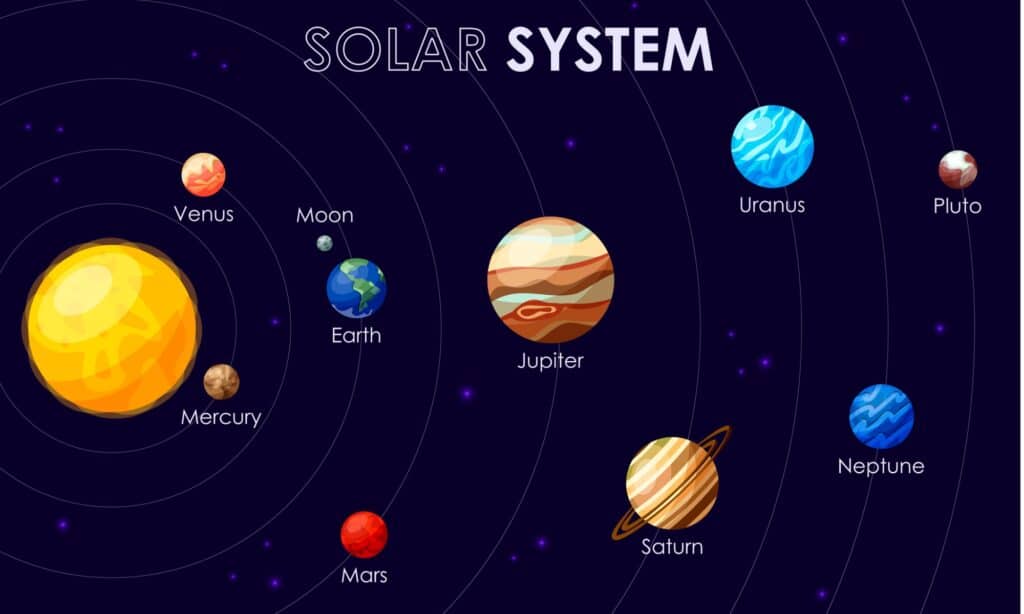
Jupiter is the fifth planet from the Sun and the largest planet in our solar system.
©iStock.com/Alexander Timoshin
Jupiter lies an average of 391 million miles from Earth and 484 million miles from the Sun. It’s the fifth planet from the Sun after Mars and before Saturn. It is also the first of the four Jovian planets or gas giants, which include Saturn, Uranus, and Neptune.
Astronomers also measure distance in light years and astronomical units. A light year is the distance light can travel in one Earth year. An astronomical unit (abbreviated AU) is about 93 million miles, or the average distance between the Earth and the Sun.
Distance From Jupiter to the Sun: 484 Million Miles
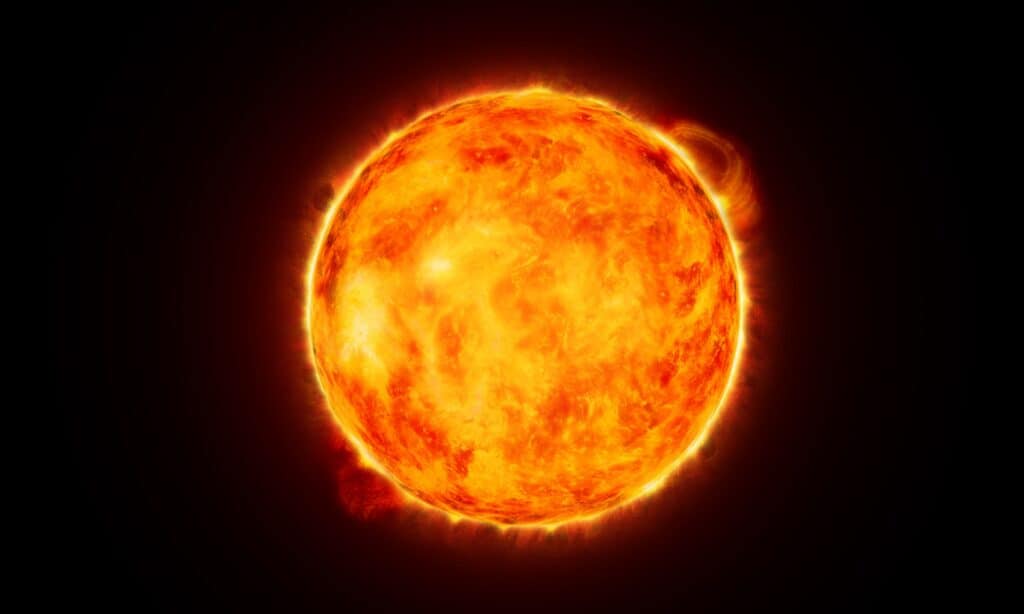
The average distance from Jupiter to the Sun is 484 million miles.
©iStock.com/hadzi3
The average distance from Jupiter to the Sun is 484 million miles or 5.2 AUs. At its aphelion (furthest position from the Sun), it is 508 million miles away, while at its perihelion (closest position to the Sun), it is 460 million miles away. It stands at about 0.00008233217279125351 light years from the Sun on average. Although it’s our largest planet, it’s no match for our star! About 1,000 Jupiters could fit inside the Sun.
Distance From Jupiter to Earth: 391 Million Miles
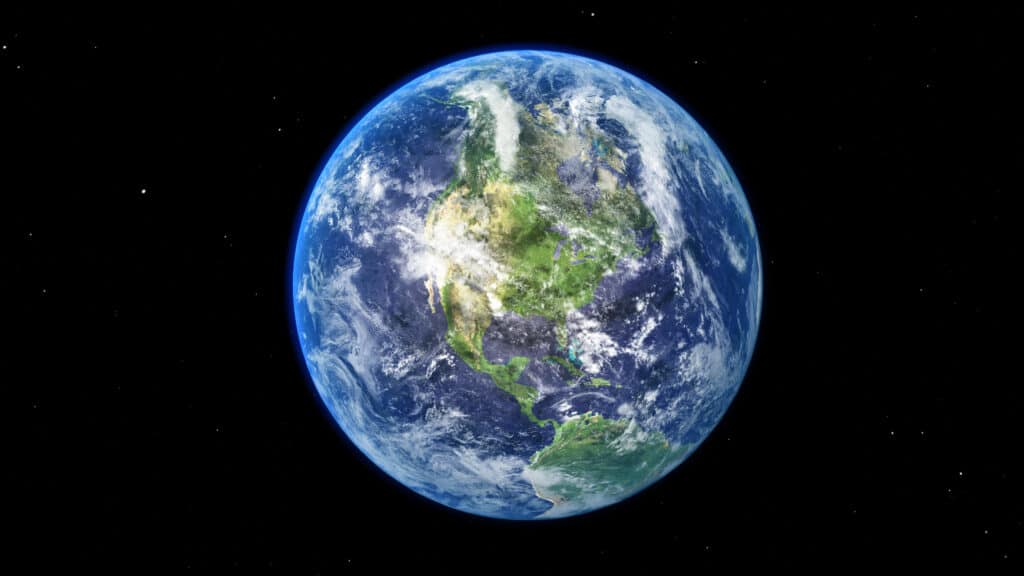
The average distance from Jupiter to Earth is 391 million miles.
©iStock.com/Thaweesak Saengngoen
The average distance from Jupiter to Earth is 391 million miles or 4.2 AUs. At its furthest from Earth, it is 601 million miles away; at its closest, it is 365 million miles away. The Jovian day and year are significantly different than ours, with one day lasting only 10 hours but one year lasting 12 of ours. This is due to Jupiter’s quicker rotation but longer revolution around the Sun.
Distance From Jupiter to Mercury: 448 Million Miles
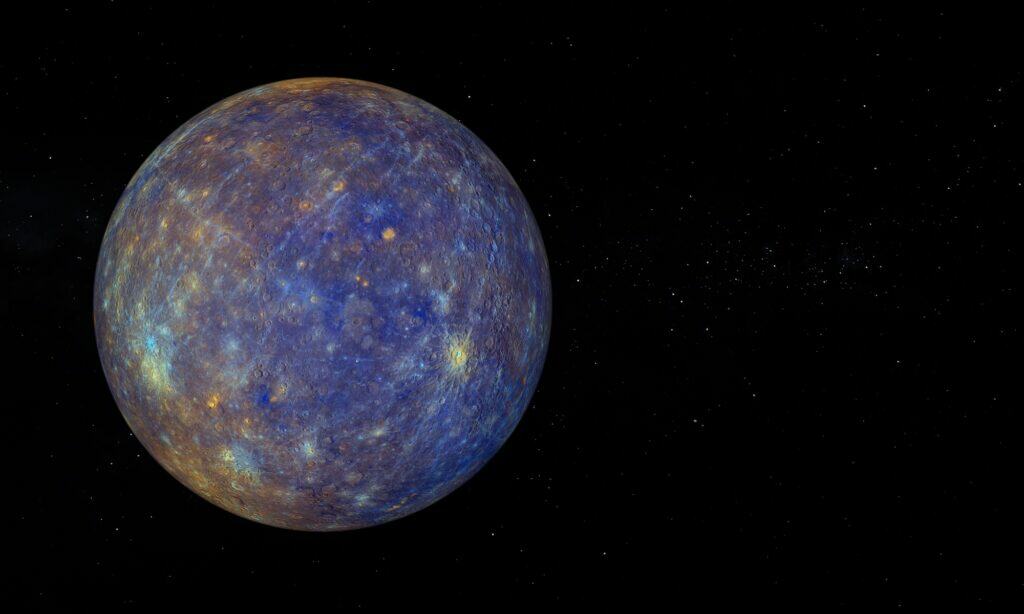
The average distance from Jupiter to Mercury is 448 million miles.
©HAKAN AKIRMAK VISUALS/Shutterstock.com
The average distance from Jupiter to Mercury is 448 million miles or 4.82 AUs. No two planets in our solar system are more disparate in size than these. The king of the planets is almost 30 times the size of Mercury; it could fit 24,462 Mercurys inside itself! In contrast to this tiny planet, which has no moons, Jupiter has 53 confirmed moons, with many more awaiting confirmation. Mercury’s year is also much shorter, lasting only 88 days.
To get another perspective on Jupiter’s size, take a look at this image of what North America would look like on its surface.
Distance From Jupiter to Venus: 416 Million Miles
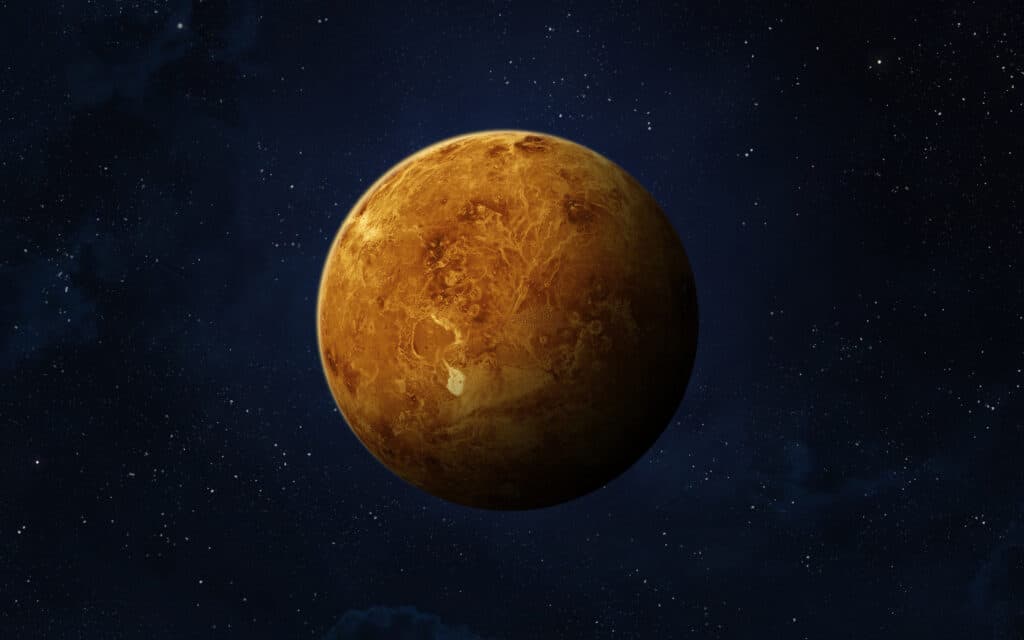
The average distance from Jupiter to Venus is 416 million miles.
©iStock.com/buradaki
The average distance from Jupiter to Venus is 416 million miles or 4.48 AUs. If Jupiter is the king of the planets, Venus is queen-like, shining more brightly in the sky than anything except the Sun and Moon. This is due to its extremely reflective atmosphere, which is made up of clouds containing droplets of sulfuric acid and acidic crystals. As Venus is so close to us in the system, its reflected light seems even brighter to us.
Distance From Jupiter to Mars: 342 Million Miles
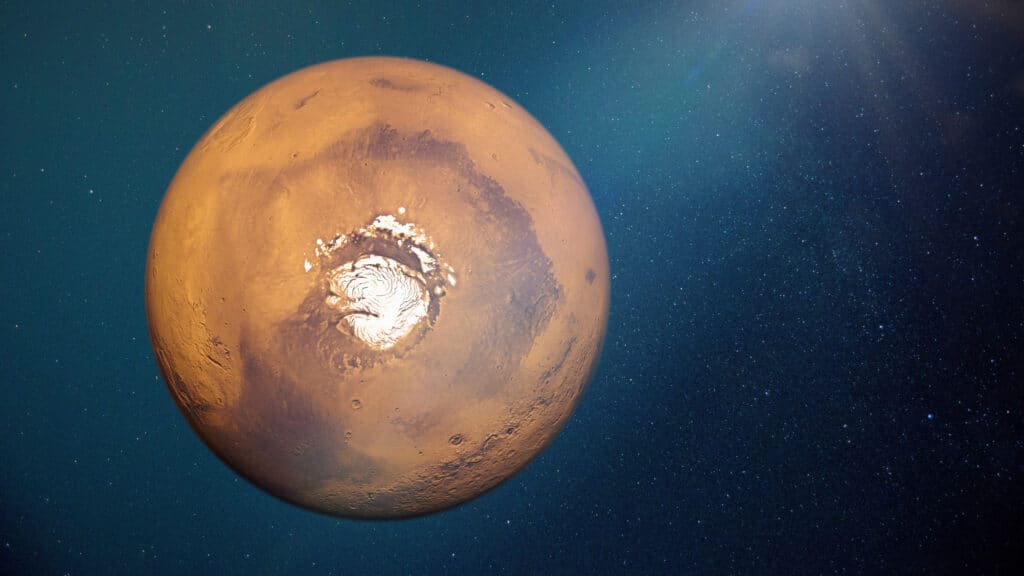
The average distance from Jupiter to Mars is 342 million miles.
©iStock.com/dottedhippo
The average distance from Jupiter to Mars is 342 million miles or 3.68 AUs. Billions of years ago, when the planets were forming, Jupiter’s gravity may have hindered Mars’ development. This may have kept it from forming a larger mass than it has today. Mars is the last of the four inner planets and the last terrestrial planet.
Distance From Jupiter to Saturn: 402 Million Miles
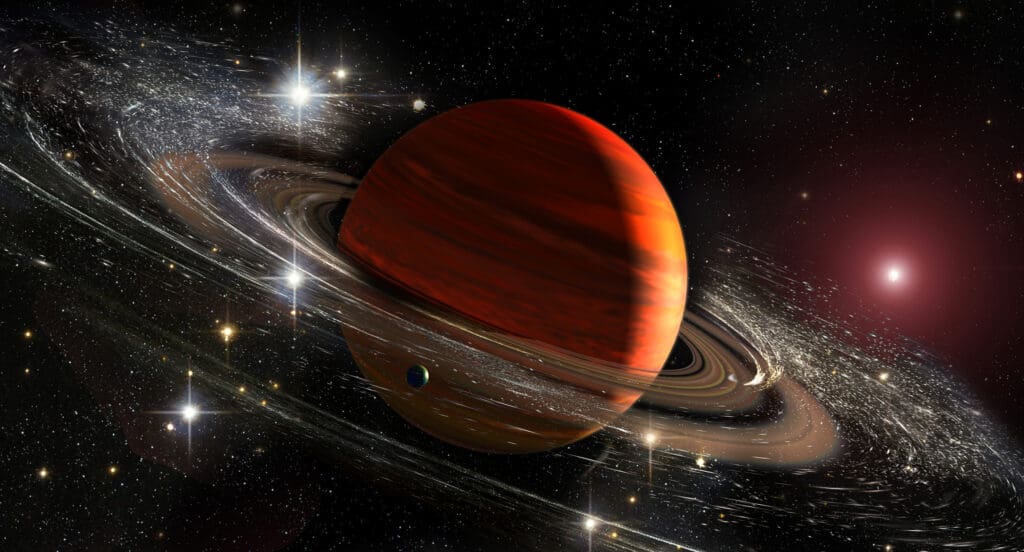
The average distance from Jupiter to Saturn is 402 million miles.
©iStock.com/Elen11
The average distance from Jupiter to Saturn is 402 million miles or 4.32 AUs. Saturn is the second largest planet in the solar system, though Jupiter still carries three times its mass. Saturn has the most distinguishable rings in the solar system, but rings of particles circle the other three gas giants as well. Scientists didn’t know about the four Jovian rings until 1979, when NASA’s Voyager 1 spacecraft flew past and captured them. The rings are dark and faint and, therefore, difficult to see under most circumstances.
Distance From Jupiter to Uranus: 1.3 Billion Miles
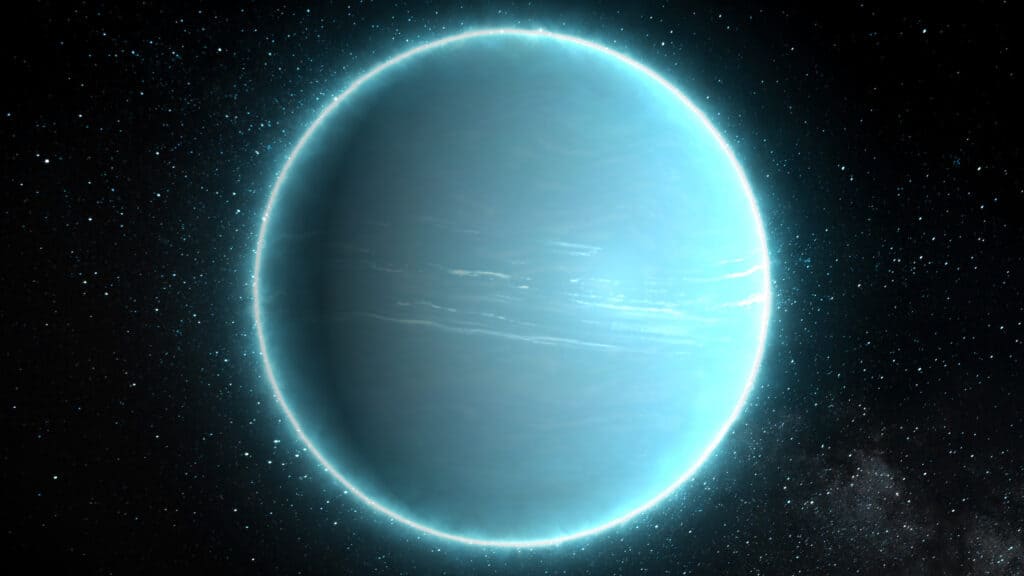
The average distance from Jupiter to Uranus is 1.3 billion miles.
©iStock.com/IncrediVFX
The average distance from Jupiter to Uranus is 1.3 billion miles or 14.01 AUs. Uranus is the third largest planet by diameter, though Neptune has a slightly greater mass. Uranus and Neptune have an abundance of methane in their atmospheres, which absorbs red light and gives them their signature bluish color. The Jovian atmosphere, on the other hand, is mostly hydrogen and helium. This planet appears as a mixture of white, orange, red, and brown colors.
Distance From Jupiter to Neptune: 2.31 Billion Miles
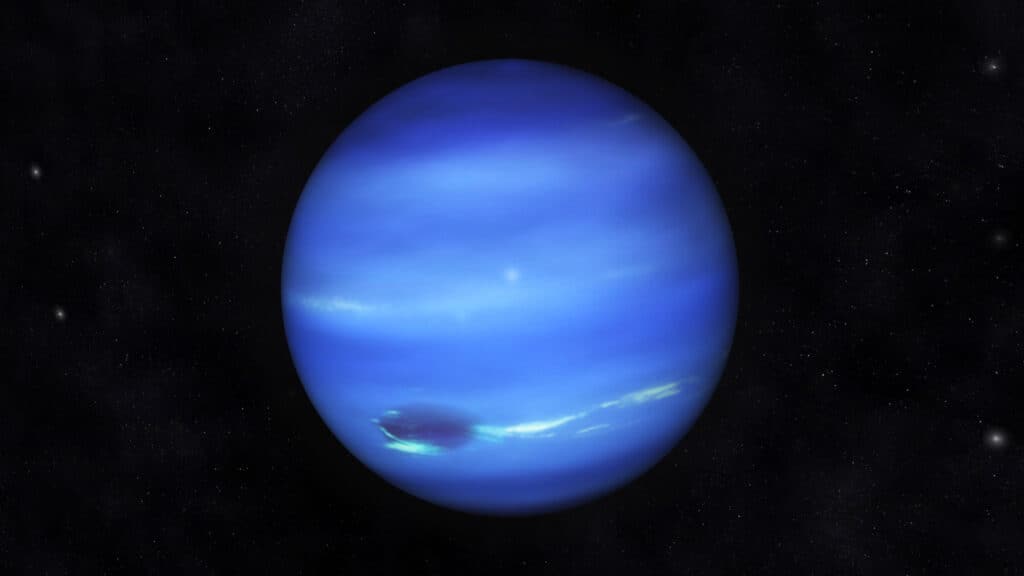
The average distance from Jupiter to Neptune is 2.31 billion miles.
©iStock.com/3quarks
The average distance from Jupiter to Neptune is 2.31 billion miles or 24.89 AUs. Because of its distance from the Sun, Neptune’s year is the longest of all the major planets, lasting an astonishing 165 Earth years or almost 14 Jovian years.
Neptune is also one of the coldest planets, with temperatures as low as -373°F (-225°C). Its winds are legendary, reaching up to 1,200 miles per hour or nearly 2,000 kilometers per hour. Jupiter is neither as cold nor as windy, though its temperatures are still fatally frigid at -238°F (-150°C). Winds in the Great Red Spot blow up to 400 miles per hour, almost 650 kilometers per hour.
How Long Does It Take to Travel to Jupiter From Earth?
It takes approximately 5 years to travel to Jupiter from Earth. Several spacecraft have visited the planet, the most recent being NASA’s Juno. Scientists launched Juno on August 5, 2011. It arrived safely on July 4, 2016. Since then, it has been orbiting the planet, collecting data, and observing its strange phenomenon.
Is Jupiter Visible From Earth?
Jupiter is easily visible from Earth with the naked eye. The only brighter natural objects in our night sky are the Moon and Venus; most of the time, it’s even brighter than Mars. However, it lacks the signature twinkle of a star. Binoculars or a telescope will provide an improved viewing experience, but ensure to optimize your session by following this guide. For a rundown of the brightest objects in our sky, check out this list.
Has Anyone Ever Set Foot On Jupiter?
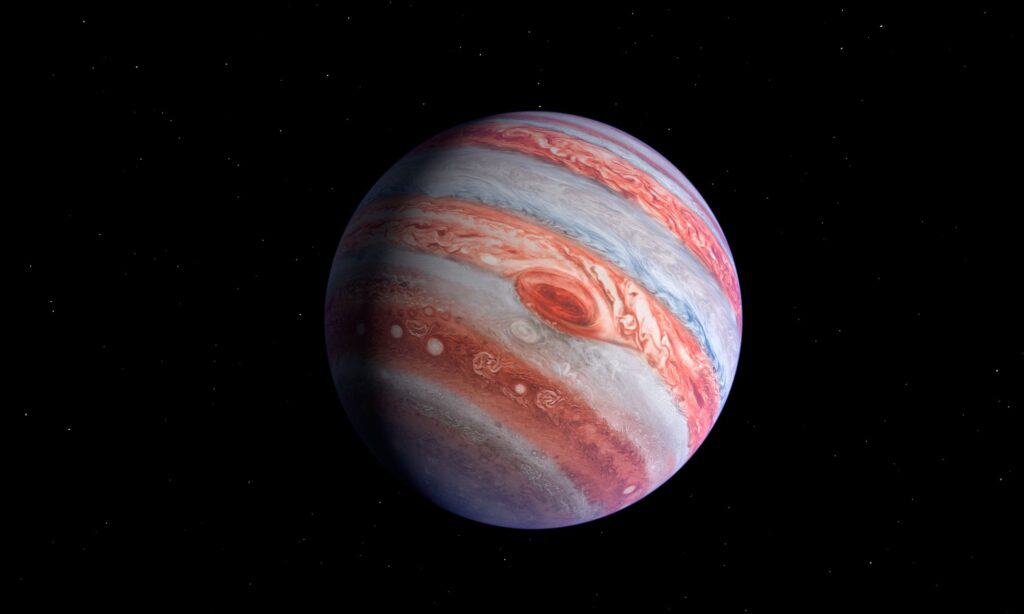
No human or spacecraft has ever landed on Jupiter.
©joshimerbin/Shutterstock.com
No human or spacecraft has ever landed on Jupiter. Its surface isn’t solid like Earth’s, so there’s nowhere to land. It may have a solid core about the size of our planet, but on top of that is the solar system’s largest ocean (composed of hydrogen) topped by a forbidding gaseous atmosphere. The pressures, temperatures, and composition of this atmosphere would destroy any spacecraft attempting to pass through.
Jovian Climate and Lifeforms
Jupiter’s climate is extremely frigid and windy. Scientists have not discovered any lifeforms on this planet; even microorganisms would struggle to survive the adverse conditions. Though it doesn’t have a land mass, its moon Io has hundreds of volcanoes that erupt with incredible force, some shooting lava dozens of miles into the atmosphere.
Jupiter also has a powerful magnetic field, many times the strength of Earth’s. This field creates intense radiation by trapping and accelerating charged particles.
Luckily for humans, we don’t have to set foot on the king of the planets to observe its mysteries. Next time you find yourself outside on a clear night, look up – you just might catch a glimpse!
Check out this article on “How Much You’d Weigh On Jupiter.”
The photo featured at the top of this post is © joshimerbin/Shutterstock.com
Thank you for reading! Have some feedback for us? Contact the AZ Animals editorial team.






